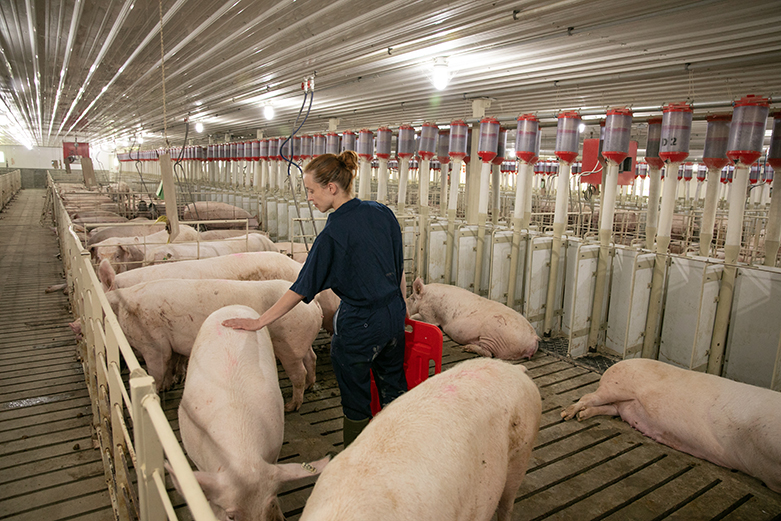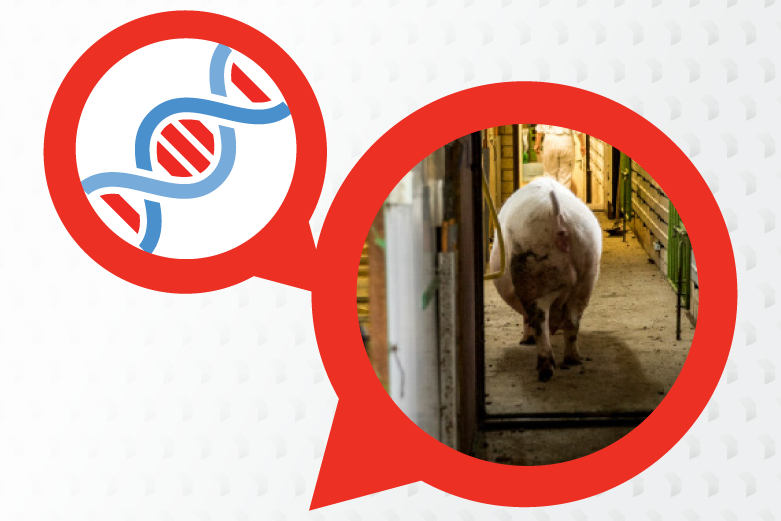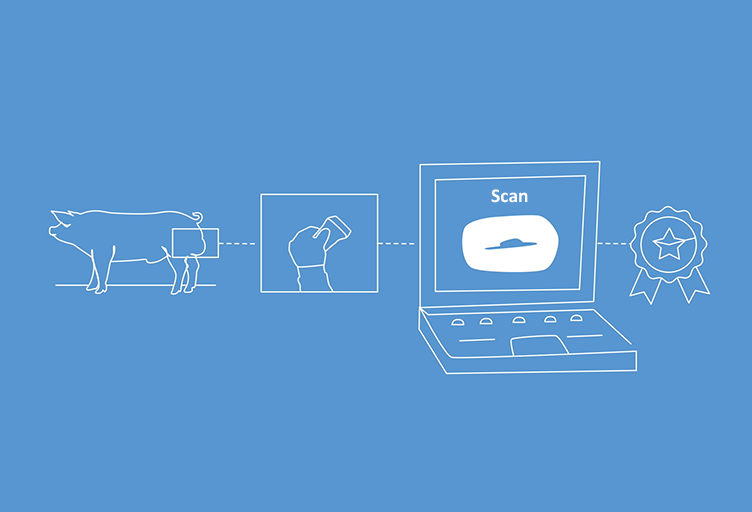From tried and tested to new technologies
The core task of a breeding company is to constantly improve the pig and to understand and predict future market developments with the ultimate goal of improvement today that fits the needs of the customer. With a focus on measuring what we want to improve PIC combines the latest innovations with the tried and tested.
‘Efficiency’ is the engine of the PIC breeding programme
Growth and feed efficiency have always been central in the core breeding goal of all PIC lines, as Fig. 1 shows. Especially now, due to increased feed costs, this is a decisive criterion for being economically successful. Not also forgetting that feed intake is an increasingly important metric for the measurement of the ecological footprint in animal husbandry, feed efficiency has been and will be a core criterion in pig breeding.

Performance combined with management requirements
In addition to the continuous optimization of our selection index with a focus on performance, product quality, efficiency, cost-effectiveness, and robustness, we use the latest, scientifically proven technologies to further advance breeding progress. In particular, the focus is currently on the understanding the behaviour of the animals. Breeding pigs that are simple to manage and meet the demanding criteria of economy and efficiency at the same time is an ongoing challenge. On the one hand, the genetic background of behaviour is still poorly understood and, on the other hand, is particularly difficult to measure reliably.
Meaningful behavioural observation
Correct and meaningful behavioural observations are usually time-consuming and therefore costly to measure, especially since the behaviours of interest (e.g., aggressive confrontations) are usually of rather short duration and can be subjective in nature. Furthermore, trained observers are needed to record behaviour in a standardized and thus comparable manner over different environments with then additional research required to identify associations with other behaviours or traits.
Technology and artificial intelligence enable objective recording
The science-based path that PIC has always taken may sometimes seem longer-winded, as it can take some time for scientific findings or technologies in research to develop into something truly practical and be implemented. In the end however the most successful path is based on facts. Science – and thus also PIC – is increasingly relying on innovative technical solutions using artificial intelligence in relation to the valid recording of behaviour. For example, thanks to technological progress, video cameras are becoming increasingly affordable and at the same time less susceptible to the suboptimal conditions in the farm (cleaning, dust, connectivity connections) and thus more interesting for standardized practical use. To achieve the greatest possible benefit, PIC was and is involved in research projects with various universities on automated data collection. However now directly within PIC, a team led by Eric Psota, previously a professor of electrical engineering and computer science at the University of Nebraska, works in this area. In his research, Eric Psota focuses on automation in the farm, in particular the automatic recognition of various behaviours using video images and other sensors. These algorithms and its automation are currently being continuously developed at PIC.
But how does such an automated algorithm work?
The scientist speaks of a “neural network” that underlies the system. Put simply, if you want to train a system to automatically recognize that a pig is in a picture, you first need thousands of images of different pigs in different poses so the system can ‘learn’ continuously. When this training is successful, the system is then able to correctly assign unknown images and, for example, correctly distinguish a pig from a cow or one behaviour from another.
So, it is not simply hanging a video camera in a pen and collecting images, the real work begins when the captured images have been stored and transmitted for analysis. Once the system is trained to recognize a (single) pig and, for example, to recognize the number of animals in the group. Next, from a breeding perspective, one would like to be able to distinguish the animals individually from each other. The PIC algorithm, like the farmer, relies on individual ear tags. In this way, even in image sequences, when the pigs have moved or been in a group, we can ensure that all pigs are still correctly assigned or reassigned.
Once we can track individuals, we can automatically assign behaviour. Again, training images must be labelled with the corresponding behaviours (e.g., resting, standing, eating, specific interactions). The PIC algorithm is now able to automatically recognize the behaviours of lateral rest, prone position, standing, sitting, eating, drinking and the distance covered. A section of such a detection, which takes place 24/7, is shown in Fig. 2.

Fig. 2: With the help of the PIC algorithm, animals in a bay can be automatically recognized individually and the behavioural categories lying sideways, prone position (blue), standing (red), sitting (yellow), eating (green) and drinking can be assigned.
The PIC algorithm is currently used on nucleus farms. The system continuously “learns” through the continuously flowing data and becomes more accurate. In this way, behaviour can be recorded continuously, and, for example, the activity level or feed intake behaviour of the animals can be further quantified and researched.
The next stage of further development is in progress
The next steps are, for example, the automatic detection of very short behaviours, such as vice events or displacement behaviour. Here, training is more difficult, as you can no longer train based on individual images (such as when recognizing pig outlines), but need entire video sequences, i.e., a sequence of several consecutive images in a certain order, to classify the behaviour correctly.
Artificial intelligence for objective foundation assessment
A modification of the PIC algorithm for automated behaviour recognition is already in use in the structure description (limb position). The leg scoring was previously carried out by trained selectors and is currently being converted to video-based recognition and specifically correlated to sow lifetime in commercial systems. The different joint regions are automatically detected, and the angle of the limbs can be calculated (see Fig. 3). In this way, the quality of the selection and thus ultimately also the profitability in piglet production is improved and with great accuracy and objectivity the proportion of the trait variation we can attribute to genetics will continue to grow resulting in faster selection.

You can find more on this topic HERE.
Never Stop Improving
The proven successful and proven focus on efficiency together with the use and further development of the latest scientific technologies enables PIC customers to produce pigs economically successfully – today and in the future. Automated behaviour detection is another building block for this success.




